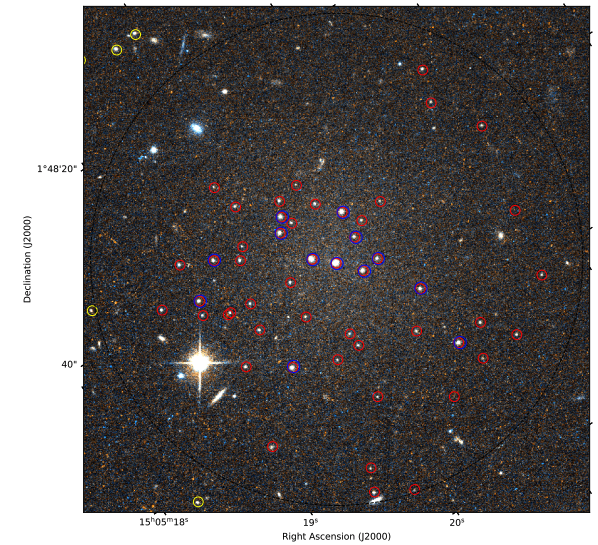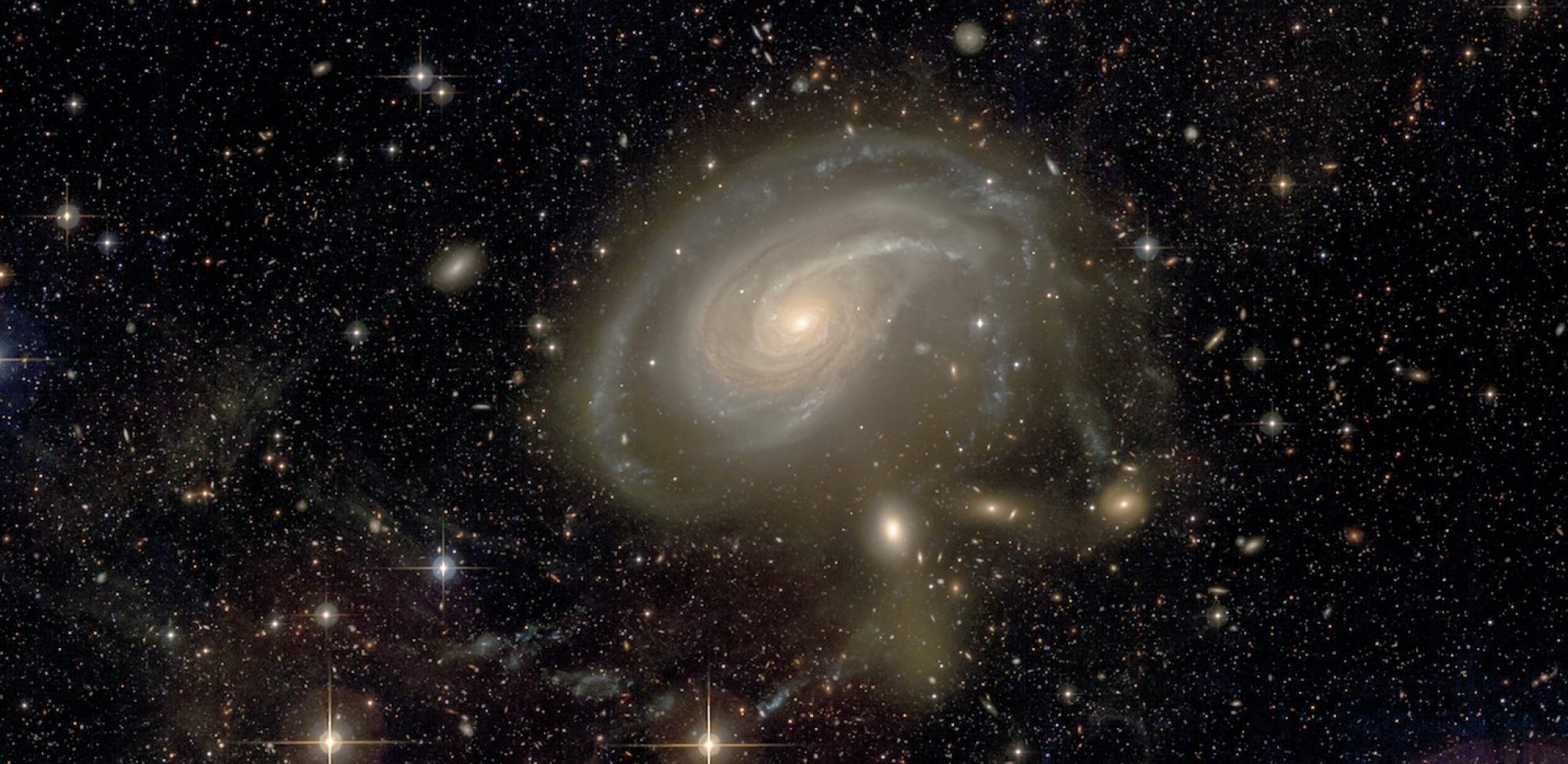
Ultra-diffuse galaxies (UDGs) are very low-surface brightness galaxies with large effective radii. Spectroscopic measurements of a few UDGs have revealed a low dark matter content, based on the internal motion of stars or globular clusters (GCs). This is in contrast to the large number of GCs found for these systems, from which it would be expected to correspond to a large dark matter halo mass. Here we present Hubble Space Telescope Advanced Camera Survey observations for the UDG MATLAS-2019 in the NGC5846 group of galaxies.
Using images in the F606WF606W and F814WF814W filters, we trace the GC population two magnitudes below the peak of the GC luminosity function. Employing Bayesian considerations, we find a total of 37±±5 GCs associated with the dwarf, which yields a large GC specific frequency of SN=84±12SN=84±12. Due to the superior image quality of the HST, we are able to resolve the GCs and measure their sizes, which are consistent with the sizes of GCs from Local Group galaxies. Using the linear relation between the total mass of a galaxy and the total mass of GCs we derive a halo mass of 1.3±0.2×10111.3±0.2×1011 M⊙⊙, corresponding to a mass-to-light ratio of over 1000. This suggests that either this UDG has an overly massive dark matter halo for its stellar mass, compared to other dwarfs — though not as massive as the Milky Way — or that the linear relation between the number of GCs and the dark matter halo mass breaks down for UDGs like MATLAS-2019. The high abundance of GCs, together with the small uncertainties, make MATLAS-2019 one of the most extreme UDGs, which likely sets an upper limit of the number of GCs for such objects.
Müller et al., 2021, ApJ 923, 9

